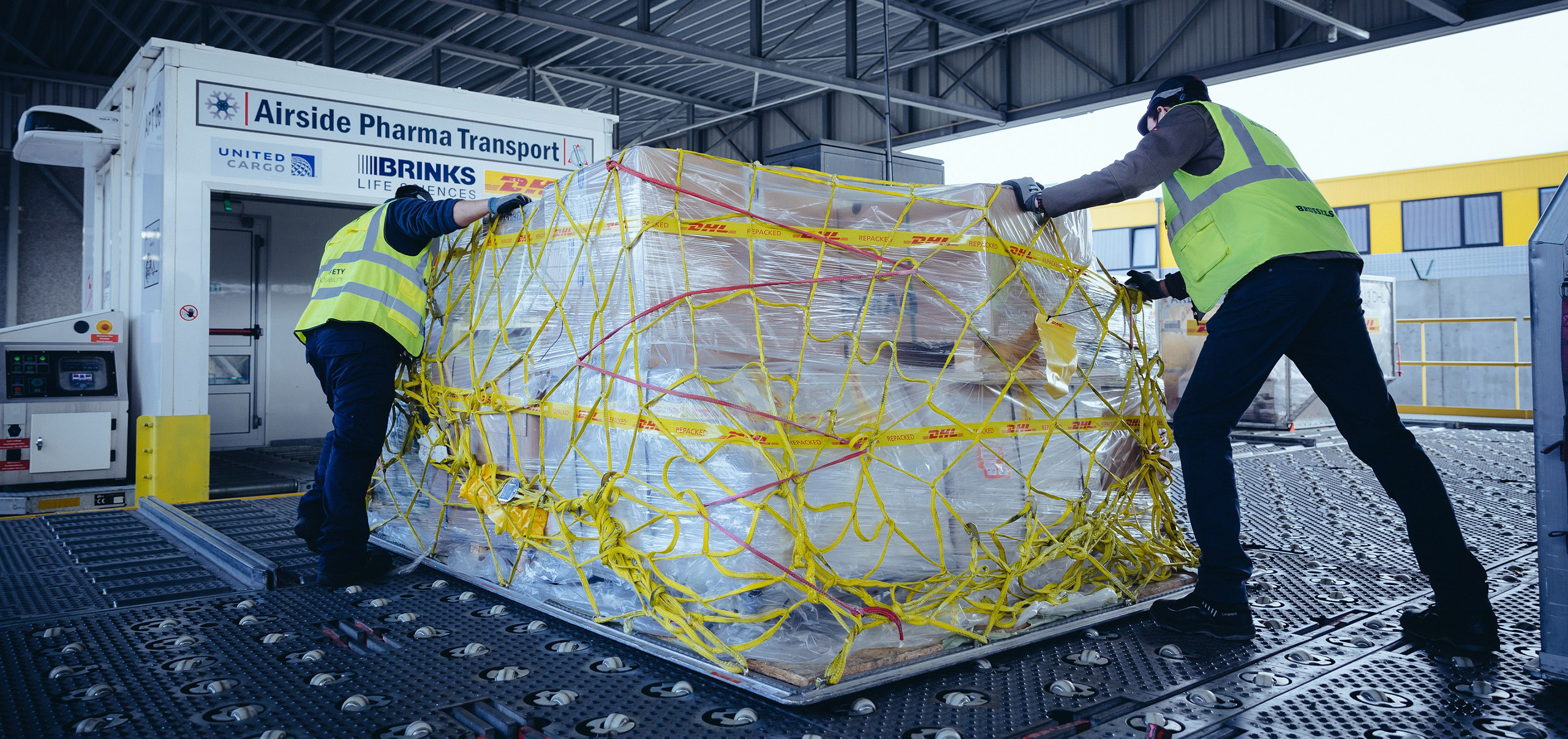
<!--[CDATA[
No wedding or new years eve without a bottle of bubbly! DHL Freight arranges a smooth transport of the beverages produced by Spains largest winery to the German market. A cold wind blows across the train platform. It's six degrees Celsius – the perfect temperature for sparkling wine. On this November morning at the Darmstadt rail freight depot, though, the only thought is on getting the goods going. A forklift pulls up, growling and whirring. The driver jumps out of the cab, pulls up the loading ramp, pushes it a meter to the right and then expertly lowers it onto the gap between the platform and the train. Having bridged the difference in heights, he drives his forklift onto the train to offload the remaining pallets of Cava (Spanish: sparkling wine).
Transport to Germany
The Sant Sadurni d’Anoia, Catalan, based winery is one of DHL FoodLogstic's – a business unit of DHL Freight – biggest customers. Together with his team Andreas Imme, head of the Mannheim branch office, is responsible for a smooth transport sequence. Since eight years ago DHL Freight manages the complete transport of Freixenet products directly from the winery not far from Barcelona to the central German distribution center in Biblis. At the start, every single consignment was handled via road freight. When this was no longer feasible during peak season demands, Andreas Imme suggested movement by rail as an alternative.
Environmently friendly
With the Deutsche Bahn DHL Freight found a reliable business partner. Although the Deutsche Bahn is often dubbed as too slow and inflexible. DHL FoodLogistics – and with it of course Freixenet – benefits from guaranteed loading space and fixed terms and conditions. And along the way using rail freight is also a significant contribution to the protection of the environment, in the sense of GoGreen. Rail freight transports on a dual-axle wagon can emit over 50% less carbon dioxide than truck-based transports,
Acute planning in detail
A comprehensive annual plan and a carefully thought through transport route won the Spanish customer over. While the about 1,200 kilometer long route is not in itself challenging – planning the transport can be quite demanding. The various stages must be carefully coordinated and aligned to accommodate for any unexpected delays. The shipment's journey begins when it is picked up from Freixenet and driven some 220 kilometers by truck to Perpignan (France), near the Spanish border. There it is loaded onto a freight train.
Through France by rail
Once reaching the French rail freight depot in Gevrey-Chambertin, the wagons are separated according to destinations in Germany. The Freixenet shipment is attached to a freight train that heads for Forbach-Saarbrücken on the German border, where the locomotives are switched and a German driver takes over. The train continues towards Mannheim to arrive at its destination in Darmstadt. The transport usually takes four to five days.
After delivery it’s still DHL Freight
The head of the branch office stands at the warehouse within the rail freight depot in Darmstadt. Forklift drivers are skillfully maneuvering their loads, quickly filling the waiting truck, which will set off soon. “Once the shipment reaches the central warehouse at Biblis, the main part of our job is done,” Andreas Imme explains, who learned the logistics business from the get-go. “After that, we deliver Freixenet shipments ranging from a minimum five pallets to full truck loads to supply stores all over Germany.” Now; it’s just a question of getting a mineral water company as a customer and it will be “Mixing water and wine” at DHL Freight.
![Andreas Imme, branch office head DHL FoodLogistics Mannheim [Photo: DHL]](http://dhl-freight-connections.com/wp-content/uploads/2018/01/BI_Freixenet_Imme-250x300.jpg)



